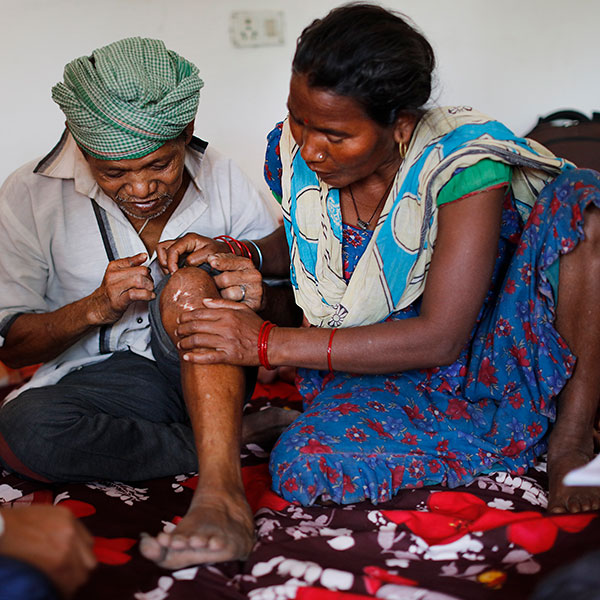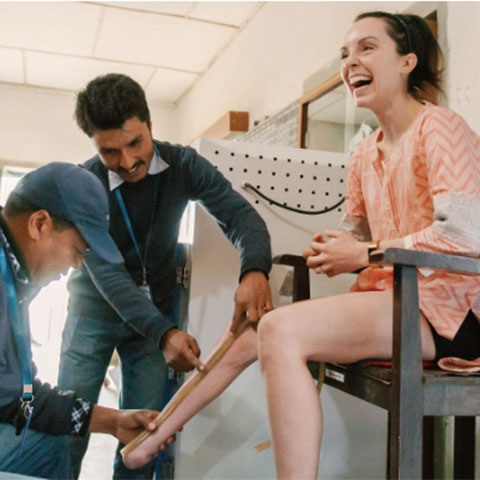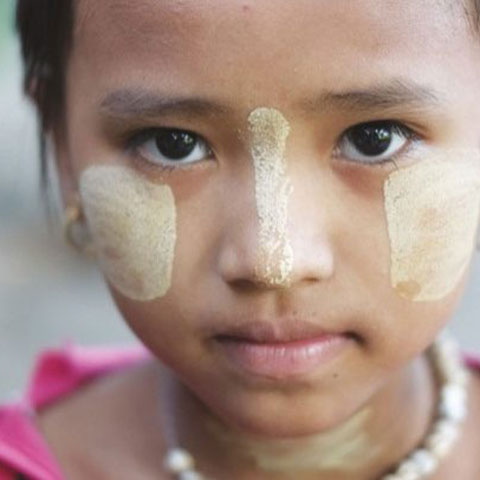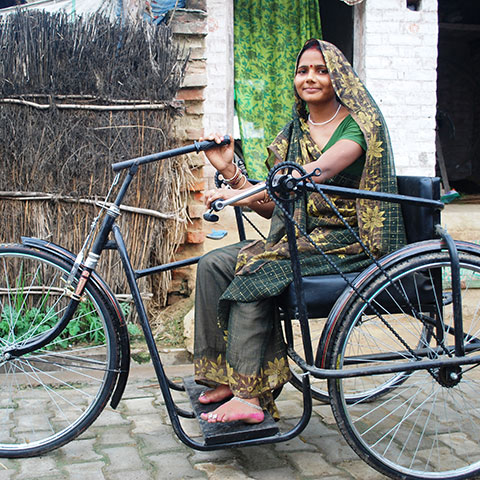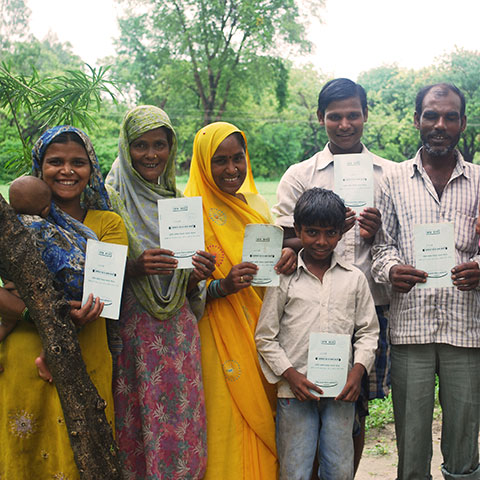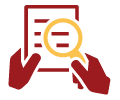Who We Are

About ILEP
ILEP is a consortium of international non-governmental organisations with a shared desire to see a world free from leprosy, and an acknowledgment that none of us can achieve this on our own. Through the programmes of its Member associations, ILEP spans more than 60 countries and 1,000 project locations worldwide. Most of the global expertise in leprosy resides in ILEP’s Members and their in-country partners.
In the fight against leprosy, ILEP and its Members work with:
- People affected by leprosy
- Ministries of Health and other government departments
- Global Partnership for Zero Leprosy
- World Health Organization
- Other NGOs and civil society organisations
- Novartis (which provides anti-leprosy drugs, through WHO, for free)
- Philanthropic trusts
- Over 500,000 individuals
Members
Our members
Participation in ILEP brings value to the Members in a variety of ways:
- At the international level through shared voice, reputation and strong external relationships
- At country level through active collaboration and shared credibility as a result of ongoing presence and commitment
- Mutually through interpersonal interaction, creative sharing of ideas, opportunities to work together and shared learning
Learn more about ILEP’s Members →
Our interactive map gives you more information about Member projects in each country and the names and contact details of ILEP Members’ country representatives.
Collaboration & partnership
ILEP’s Member associations recognise that through collaboration, co-operation and harnessing collective strengths we will have a far greater impact as we work towards zero leprosy. Resources can be better used, duplication can be avoided and support can be concentrated where it is most needed.
Financial and technical collaboration
ILEP Members join forces to support major initiatives in scientific research, undertake projects with potential global impact, develop teaching materials, undertake training, and respond to the needs of national leprosy programmes. A prime example is the co-financing by five ILEP Members of the Leprosy Research Initiative, which is now a major force in the funding of leprosy research
Country coordination
ILEP’s strategy is implemented at country level by the active work of its Member associations. In countries where more than one ILEP Member is involved, ILEP appoints country coordinators to work as facilitators. Their role includes:
- Coordinate the involvement of ILEP Members in activities at the national level;
- Represent the interests of ILEP Members with other partners including government;
- Consult with ILEP Members, and other partners, towards an annual action plan;
- Identify issues of common interest, concern, and opportunity for ILEP support, including possible funding collaboration;
- Ensure a good flow of information;
- Organise regular meetings of in-country Members to discuss issues of common concern; and
- Promote availability of technical advice and know-how to projects within the country.
Promoting knowledge exchange
ILEP has mechanisms to enable the Members to share learning, exchange help and advice, and formulate strategies to advance their joint goals. These mechanisms include a 2-3 day conference, held most years, to gain wide input and mutual learning on topics of current importance to the Members and to the leprosy world as a whole.
Joint communications & fundraising
Informal groups of communications officers and institutional funding officers from most of the Member associations meet virtually, and occasionally face-to-face, to learn from one another and discuss opportunities to work together effectively. Particularly important for communications officers is World Leprosy Day, a set of global promotion and awareness raising events at the end of January each year. Institutional fundraisers are increasingly finding opportunities to work together especially in major multi-country, multi-stakeholder funding proposals to large trans-national donors.
ILEP Members’ meetings
ILEP Members meet twice a year, once in-person and once virtually, to assess progress against the ILEP strategy and discuss issues and opportunities. The in-person meeting schedule, over several days, usually includes:
- The ILEP Technical Commission
- A day focusing on opportunities for active collaboration on potentially game-changing projects in line with the ILEP strategy
- The Members’ Assembly, which comprises the CEOs or other appointed representatives of the Member associations
The ILEP Advisory Panel, comprising persons with lived experience of leprosy, also meets in-person once a year.
Partners
Overview
Despite their combined resources, people and expertise, ILEP Members know they cannot hope to achieve their shared vision of a world free from leprosy without active partnerships with other organisations.
At country level, ILEP Members partner with other local and international NGOs, with central and local governments, with organisations of persons affected by leprosy, and with the World Health Organization. Increasingly we are seeing ILEP Members active in the formation of national partnerships for zero leprosy. These have the potential to unite all stakeholders and resources towards national roadmaps to zero leprosy.
Because zero leprosy is a wide-ranging goal, ILEP also has a network of partnerships at the global level:
- in the leprosy world, including with the Global Partnership for Zero Leprosy;
- within the Neglected Tropical Diseases (NTD) community; and
- in disability and inclusion.
Leprosy partners
Success requires partnerships. ILEP recognises that the road to zero leprosy is a challenging one, and therefore seeks to work with a wide range of other partners who share a commitment towards that goal.
Neglected tropical disease partners
Neglected Tropical Diseases (NTDs) affect more than one billion people worldwide, primarily in low income populations living in tropical and sub-tropical climates. By partnering on broader NTD issues, especially skin-related NTDs, ILEP helps to move the dial on health inequalities seen in the leprosy and NTD affected communities.
Disability & inclusion partners
Leprosy, if not promptly diagnosed and treated, can result in nerve damage, physical impairment and the risk of severe disability. This can profoundly affect the individual, the family and the whole community. ILEP Members work collaboratively in many settings to:
- prevent people from becoming impaired by leprosy,
- stop existing impairments turning into disabilities, and
- work across a range of programmes focused on rehabilitation and social inclusion.
Learn more about our disability and inclusion partnerships →
Structure
Overview
ILEP is governed by its Members’ Assembly and Executive Board. Key input into governance decisions comes from the ILEP Technical Commission and Advisory Panel, which consists of persons with lived experience of leprosy. The ILEP Secretariat is a small, virtual office registered in Geneva, Switzerland.
Download ILEP’s constitution
Download ILEP’s Bye-Laws
Members’ Assembly
The Members’ Assembly is the highest governing body of ILEP. It normally meets twice a year. It comprises one representative, usually the CEO, of each Member association. Its main roles include to agree on strategy, approve the budget and the annual financial statements, appoint the CEO and elect the Executive Board, the ILEP Technical Commission and the ILEP Advisory Panel.
Executive Board
The Executive Board consists of five Member CEOs. It ensures that ILEP’s policy and practices are in keeping with its aims, vision and values, monitors the performance and annual workplan of the CEO, and ensures that decisions of the Members’ Assembly are being implemented.
ILEP Advisory Panel
The ILEP Advisory Panel of persons with lived experience of leprosy was formed in 2015. ILEP acknowledged that it needed to work more closely with people personally affected by leprosy, to guide its policies, governance and strategy. This has made ILEP more effective, strengthened its advocacy work, and responded to the call for participation of people affected in decision-making processes.
The Advisory Panel provides advice to ILEP and its Members around policy, implementation of the ILEP strategy and interpretation of trends. It works closely with the ILEP Secretariat to keep building the connection between sound policy and the programme practice of the Members.
Specifically, the Advisory Panel is expected to:
- Improve ILEP’s advocacy for policies and practice on behalf of people affected by leprosy;
- Make practical recommendations to ILEP in order to improve strategies and plans; and
- Provide guidance on ILEP communication and campaign material.
It also liaises periodically with the ILEP Technical Commission and with ILEP’s network of communications officers, for mutual understanding and coordinated guidance.
ILEP Technical Commission
The ILEP Technical Commission (ITC) comprises a group of eight experts covering all aspects of leprosy work and appointed by the ILEP Member’s Assembly for a four-year period. It provides technical advice and guidance to ILEP and its Members, and where relevant to the leprosy world at large, on the full range of clinical, technical and operational aspects of leprosy work, through its meetings, publications and recommendations.
Specific areas of advice and guidance include:
- Evidence-based advice on clinical, technical and operational aspects of leprosy work. Some of this advice is in the form of periodic reviews, commissioned teaching and learning materials, bulletins and advisory papers;
- Translation of research findings and data into policies, tools and other guidance on field-based practice;
- Design, commissioning or advocacy for research to address identified priorities or knowledge gaps;
- Encouragement and practical support for the maintenance and development of leprosy-related expertise;
- Direct advice to ILEP Members and field programmes;
- Technical input into ILEP strategies, policies, advocacy position papers, and communications and campaign materials
The ITC has a four-year workplan and a number of specialist subgroups to support implementation of the workplan.
Meet the ILEP Technical Commission →
ILEP Secretariat
The ILEP Secretariat’s primary responsibilities are:
- Lead the development of the ILEP Strategy and implement it as agreed by the Members’ Assembly
- Marshal the resources and skills of Members to ensure effective representation in policy, strategy, communications and advocacy
- Promote ILEP and ensure that it is represented effectively to external stakeholders
- Ensure effective technical collaboration across Members, with the ILEP Technical Commission and Advisory Panel, and with key stakeholders
- Develop coordination mechanisms to optimise the work of Members and avoid duplication
Language & participation
Putting the person before the disease
Throughout most of recorded history, men, women and children who have experienced leprosy have suffered grievous forms of social injustice amounting, in effect, to dehumanisation. As a result of fear, and the resulting stigma associated with leprosy, they have had their most basic human rights denied by virtually every culture in which leprosy has appeared. Despite the fact that there has been a cure for leprosy for more than 60 years, outdated images and stereotypes and offensive names persist, resulting in widespread prejudice and discrimination. ILEP joins hands with many organisations of persons affected by leprosy, to replace stigma with respect and dignity.
ILEP policy on language, photography and imagery
ILEP’s policy on language, photography and imagery was developed in association with the ILEP Advisory Panel, and with wide consultation with ILEP Member associations. It is intended to avoid the use of language, photographs or imagery that would offend or cause a person affected by leprosy to be hurt, disrespected, excluded or victimised. It provides guidelines for the use of language, photography and images in all ILEP and ILEP Member communications. The guiding principle is that all our written materials, spoken words, photographs or imagery are used with integrity to respect and promote the dignity and honour of all persons affected by leprosy and their families.
Download Policy (EN)Download Policy (ESP) Download Policy (FR)
Why we don’t use the word leper
ILEP Members are committed to using language that promotes dignity, respect, and recognises a person as an individual separate from the disease, focusing on their qualities rather than disabilities. This means we:
- Use the phrase “person affected by leprosy” which is the phrase preferred by organisations of people with personal experience of leprosy
- Do not use derogatory words such as “leper,” or words that define a person by their disease like “Hansenite,” which refers to Hansen’s Disease, an alternative name for leprosy
- Do not use abbreviations like “PAL” or “LAP”, making people become just another label
To harm or to heal: the power of words
Mathias Duck, member of the ILEP Advisory Panel, shares his personal perspective on why it is important not to use the ‘L’ word.
ILEP statement on participation
The principles of dignity and inclusion mean that people with disabilities, including people affected by leprosy, have the right to participate in relevant ways in the decisions which organisations make that affect them. ‘Nothing about us without us’. In 2021, after development by the ILEP Advisory Panel, the ILEP Members’ Assembly adopted a Statement on Participation to ensure that persons affected by leprosy have the space and the support for meaningful and effective participation in the policies and decision-making processes of ILEP Member associations.
